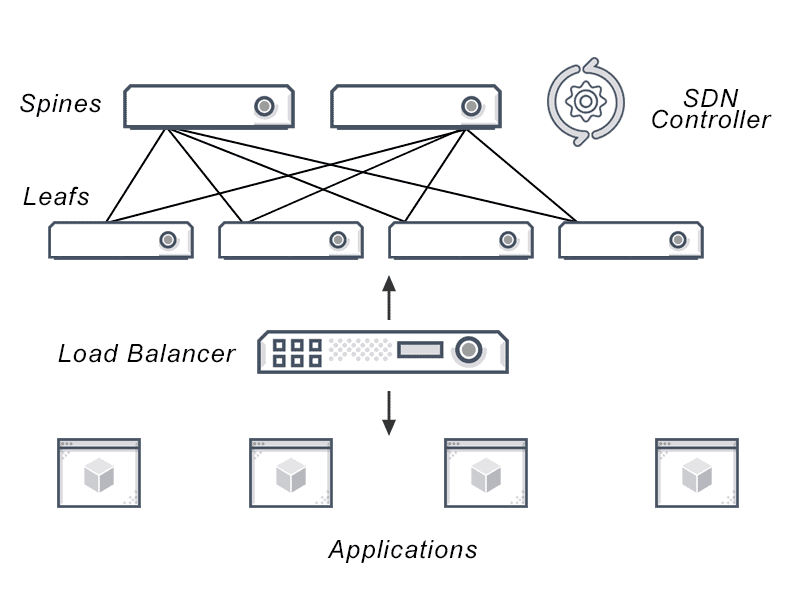SDN Load Balancing Definition
SDN Load Balancing stands for software-defined networking load balancing.
A SDN-based load balancer physically separates the network control plane from the forwarding plane. More than one device is able to be controlled at the same time when load balancing using SDN. This global view leads to more optimized load balancing.

What is SDN load balancing?
Software-defined networking (SDN) provides flexible control so enterprises can react to changing business requirements more quickly. Load balancing in SDN separates the physical network control plane from the data plane. An SDN-based load balancer allows for the control of multiple devices. This is how networks can become more agile. The network control can be programmed directly for more responsive and efficient application services.
While compute and storage have seen innovations in virtualization and automation, networks have been lagging behind. Load balancing using SDN allows the network to function like the virtualized versions of compute and storage.
How does load balancing using SDN work?
Software-defined networking (SDN) load balancing removes the protocols at the hardware level to allow for improved network management and diagnosis. SDN controller load balancing makes data path control decisions without having to rely on algorithms defined by traditional network equipment. An SDN-based load balancer saves running time by having control over an entire network of application and web servers.
Load balancing in SDN leads to discovery of the best pathway and server for the fastest delivery of requests.
What are the benefits of SDN load balancing?
Software-defined networking (SDN) load balancing includes the following benefits:
- Lower cost
- Greater scalability
- Higher reliability
- Flexibility in configuration
- Reduced time to deploy
- Automation
- Ability to build a network without any vendor-specific software/hardware
How does an SDN-based load balancer work in cloud computing?
Traditional load balancers have limitations in flexibility and adaptability. The increase in cloud usage requires more rapid allocation of resources that an SDN-based load balancer is best equipped to handle.
It can dynamically manage massive traffic flows by using virtual switching technology instead of traditional hardware switching technology. SDN controller load balancing monitors the data throughput of each port using variance analysis and then redirects traffic accordingly. This serves users with greater scalability, higher reliability and lower cost.
Does Avi offer SDN load balancing?
Yes. Avi offers elastic load balancing for SDN environments. Avi provides 100% software load balancing to ensure a fast, scalable and secure application experience. It delivers elasticity and intelligence across any environments. Avi’s intent-based applications services platform scales from 0 to 1 million SSL transactions per second in minutes. It achieves 90% faster provisioning and 50% lower TCO than a traditional appliance-based approach. Built on software-defined architectural principles, Avi extends L2-L3 network automation benefits from SDN solutions to L4-L7 services.
For more on the actual implementation of load balancers, check out our Application Delivery How-To Videos.
For more information on SDN load balancing see the following resources: